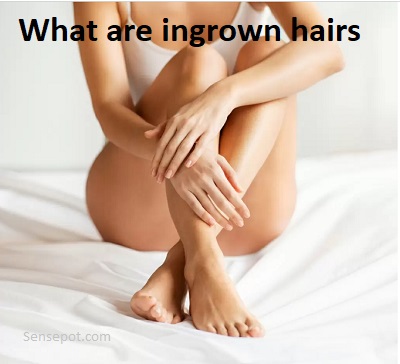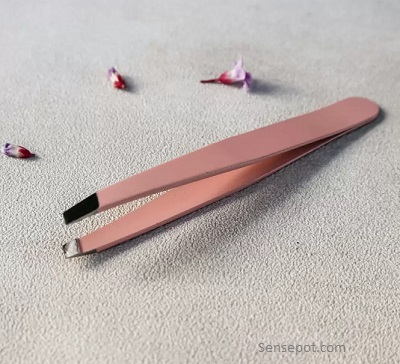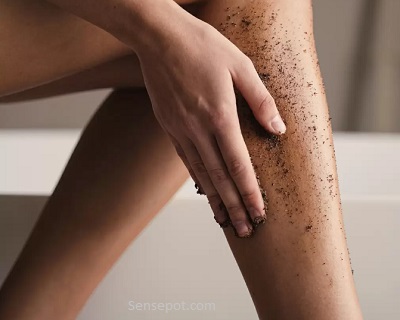Ingrown Hair: Symptoms, Causes, Treatment, and Prevention Unwanted body hair is a problem that not only girls but also men are trying to deal with. There are many ways to do this, you just have to choose the most suitable for yourself. And, it would seem, the path to silky and beautiful skin is open. But not everything is so smooth…

Quite often, after epilation and depilation, ingrown hairs appear that spoil the whole picture. Why they appear and how to get rid of them – we’ll talk about all this in this article.
What are ingrown hairs?
The term “ingrown hair” refers to the ingrowth of a hair shaft into the thickness of the skin. This is a fairly common dermatological problem and is referred to in the medical literature as pseudofolliculitis. This condition may be accompanied by an infection of the hair follicle with the further formation of a pustule – a dense formation with purulent contents. Outwardly, pseudofolliculitis is very similar to a pimple, as it has a lot in common with it:
- Inflamed bumps on the skin without pus content (papules);
- Inflamed bumps containing pus (pustules);
- Soreness of education;
- Skin irritation;
- Local hyperpigmentation (discoloration of the skin).
Despite all of the above, there are two clear differences:
- The hair shaft is visible under a thin layer of skin;
- Inflammatory formations occur exclusively in those areas of the skin where unwanted hair is regularly removed.
Causes of ingrown hairs
Any hair removal procedures must be carried out correctly, and it is better, of course, to entrust this matter to the master. But many girls still prefer to “bring beauty” at home. However, after sugaring, waxing, shaving, and also after an epilator, ingrown hairs often appear on the legs, in the bikini area, and on the armpits. All this happens because some rules of epilation and depilation were not observed. Ingrown hairs appear for the following reasons:
1. Hair stiffness. Most often, women with dark and coarse hair, as well as owners of curly curls, have to deal with this problem.
2. Hyperkeratosis. This is a dermatological disease in which there is a high rate of cell division of the stratum corneum and a violation of the process of their desquamation. As a result, the skin becomes denser and it is difficult for the hair to germinate.
3. Improper shaving. At this point, I would like to note several factors at once that affect the appearance of pseudofolliculitis:
- Do not use shaving creams or gels. Thus, you not only injure the skin but also do not soften the hairs themselves. Incorrectly shaved hair begins to grow into the thickness of the skin.
- Shave against hair growth. The first problem you run the risk of is irritation. The thing is that in this way you remove not only hair but also remove part of the epithelium. As a result, microdamages are formed and the inflammatory process begins to develop. Irritated skin can partially overlap the hairs, and they begin to grow.
- You are using a dull machine. A blade that is poorly sharpened or blunted from repeated use damages and breaks the hair, which leads to its abnormal growth and germination into the thickness of the skin.

4. Incorrectly selected density of wax or sugaring paste. For each zone, the density of the depilatory agent is selected, and the density of the hair is also taken into account. This eliminates the partial removal of the hair, provoking its abnormal growth.
5. Uncomfortable underwear. If you wear tight and uncomfortable underwear, it can kink and direct hair growth into your skin.
Do not neglect all the rules for the proper removal of unwanted hair. After all, the only way you can avoid this unpleasant problem.
How to remove ingrown hairs at home
If, however, this problem has overtaken you, something urgently needs to be done about it. There is nothing complicated. We have prepared for you step-by-step instructions that will help you quickly get rid of ingrown hairs.
- It is necessary to steam the skin and remove the keratinized particles of the epidermis. To do this, you can use a scrub or peeling agent.
- Prepare a thin needle and tweezers.
- Disinfect instruments and skin well.
- Find the tip of the hair and gently pick it up with a needle so that you can pull it out. Try not to injure the skin too much, so that there is no severe inflammation later.
- Remove hair at the root with tweezers.
- Disinfect your skin.
When trying to remove ingrown hair, be sure not to overdo it and not severely damage the skin. Since you may have small wounds and scars.

Interesting on the topic DIY Hair Masks: Natural Treatments for Healthy Hair {2023}
Prevention of ingrown hairs
No matter how trite it may sound, it is better to prevent a problem than to deal with it later. What can you do:
- Before the epilation procedure, be sure to scrub the skin. Give preference to your favorite products, we also recommend using enzyme powder;
- After epilation, many experts recommend repeating the scrubbing procedure after 2-3 days to definitely prevent pseudofolliculitis;
- Shave only in the direction of hair growth, use foams and gels to soften hair and better glide. The machine must be new with a sharp blade;
- It will not be superfluous to use special lotions or gels that prevent ingrown hair ;
- If, after a certain epilation or depilation procedure, the hair grows strongly into the skin, find an alternative way to remove unwanted vegetation on the body;
- Do not wear tight underwear.
The tips are very simple, but ignoring them can lead to unpleasant consequences. Therefore, do not be lazy and carefully prepare for epilation and depilation at home.
FAQs
Can ingrown hairs be prevented altogether?
While it may be difficult to completely prevent ingrown hairs, proper hair removal techniques, and regular exfoliation can greatly reduce their occurrence.
Is it safe to remove ingrown hairs at home?
It is generally safe to remove ingrown hairs at home as long as proper sterilization techniques are used, and the area is not excessively irritated or infected.
Can ingrown hairs lead to more serious skin conditions?
While ingrown hairs themselves are not usually serious, they can lead to infection if left untreated, which can potentially cause more severe skin conditions.
What is the best way to exfoliate to prevent ingrown hairs?
Using a gentle exfoliating scrub or brush, focusing on the areas prone to ingrown hairs, can effectively remove dead skin cells and prevent clogging of the hair follicles.
How long does it take for an ingrown hair to heal?
The healing time for an ingrown hair can vary depending on the severity of the inflammation and infection, but generally, it can take a few days to a week for the skin to fully heal. If it persists, it’s best to consult a dermatologist.


